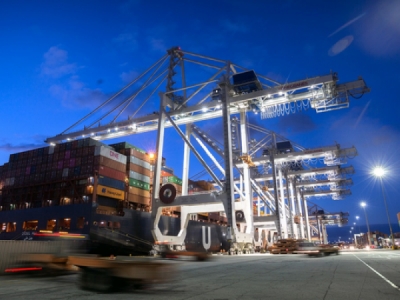
Posted on June 4, 2019
The Port of Savannah and St. Louis Regional Freightway have partnered on a significant investment plan that creates a new rail connection between the St. Louis, Missouri, region and the Georgia sea port to help improve the movement of goods to the Midwest.
Port of Savannah is investing $3 billion to increase its containerized cargo capacity from 5 million to 8 million TEUs (20-foot equivalent units) by 2028. The port identified the St. Louis region as a key import/export market from which containers can be consistently distributed at a lower cost for shippers.
The investment is intended to accelerate the efforts of the shipping gateway to better support retailers and manufactures and distribute goods to and from the interior of the U.S.
A big component of the plan is a new $220 million rail terminal that is expected to be the largest on-terminal rail facility in North America by 2020. The rail expansion will improve efficiency and double terminal rail lift capacity to approximately 1 million containers per year.
This rail terminal will enable rail providers CSX and Norfolk Southern to deliver faster and more frequent rail service to Midwest markets where both rail companies already have established intermodal yards.
The plan is key to the making the Port of Savannah a more attractive alternative to shipping goods by rail from the West Coast. John Trent, senior director of strategic operations and safety at the Georgia Ports Authority, projects a reduction in cost to shippers of $300 to $400 for each container moved when compared to the West Coast, with comparable travel time.
“We offer a premium, lower cost option and, in addition, we provide that consistency,” said Trent. “We believe we have a viable solution to not only support existing business in the St. Louis region, but also to grow business in the St. Louis region.”
St. Louis is the nation’s third largest rail hub and is strategically located in the center of the U.S. where goods can be easily transferred by all modes of transportation. Those modes include the nation’s third largest inland port, an efficient inland port system, as well as four interstates connected by the Interstate 270 outer-loop.
“Competition for intermodal containerized shipping primarily focuses on three things: low-cost, efficient transportation, freight volumes and shorter transit times,” said Matt Freix, regional vice president for DNJ Intermodal Services. “The St. Louis region is able to deliver in all of those categories.”
Source: truckinginfo.com





